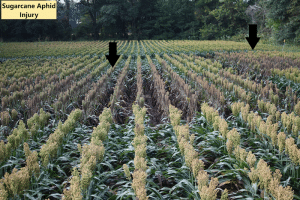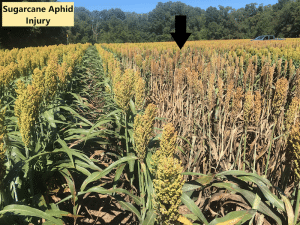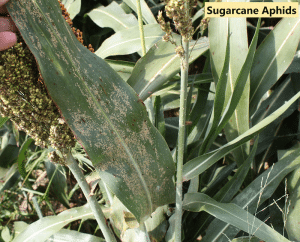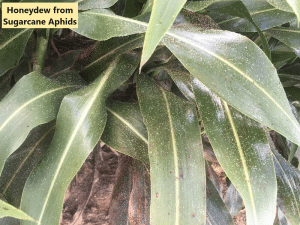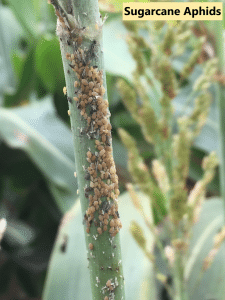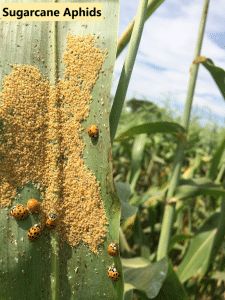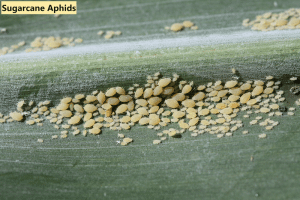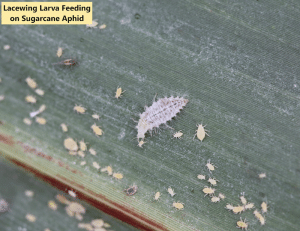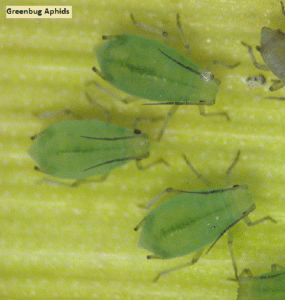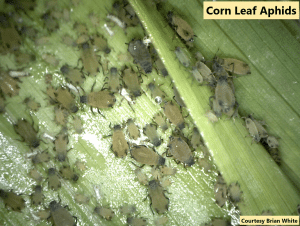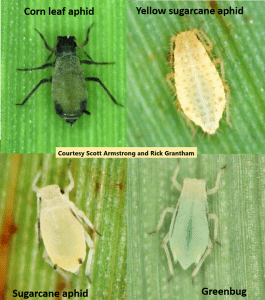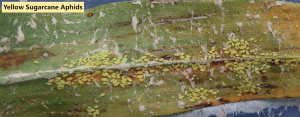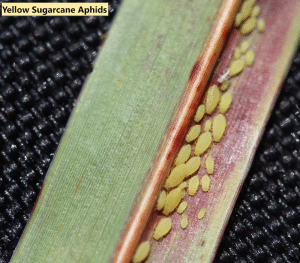 Several species of aphids may be found on grain sorghum. These insects damage by sucking juices from the plant, and some inject a toxin that can kill plant tissue while feeding. The most common aphids found in grain sorghum are the corn leaf aphid and sugarcane aphid.
Several species of aphids may be found on grain sorghum. These insects damage by sucking juices from the plant, and some inject a toxin that can kill plant tissue while feeding. The most common aphids found in grain sorghum are the corn leaf aphid and sugarcane aphid.
The corn leaf aphid has black cornicles, legs and antennae. The body is bluish-green in color and about 1/16 inch long. Corn leaf aphids are usually found feeding in the whorl of the sorghum plant. Check primarily in the whorls of sorghum plants for this insect. The corn leaf aphid does not inject a toxic saliva into the leaves, but can transmit viral diseases if Johnsongrass is present in the field.
The greenbug aphid is a small, light green aphid with a dark green stripe down the back. It is approximately 1/16 inch long. Early-planted sorghum is more susceptible to attack from greenbug. The greenbug has a toxic substance in its saliva that causes red spots on leaves where it has fed. It can also transmit viral diseases like Maize Dwarf Mosaic Virus.
The yellow sugarcane aphid is a small aphid that is yellow to light green in color, although usually yellow in sorghum. They have two double rows of dusky colored spots down the top of the abdomen, and rows of spots are also present along the lateral margins of the abdomen. The body is covered with short, stiff hairs. The cornicles (tail-pipes at the end of the abdomen) are reduced to slightly elevated pores. Like the greenbug, the yellow sugarcane aphid injects a toxin while feeding that causes red spots on leaves where it has fed.
The sugarcane aphid is an invasive pest first found in Tennessee in 2014. Of the aphids that infest sorghum, they are most likely to cause serious economic damage. It is small and white to yellow in color. Infestations are often initially concentrated on field edges. Populations can build rapidly and may kill entire plants in some circumstances. The accumulation of honeydew on heads may also cause problems during harvest.


